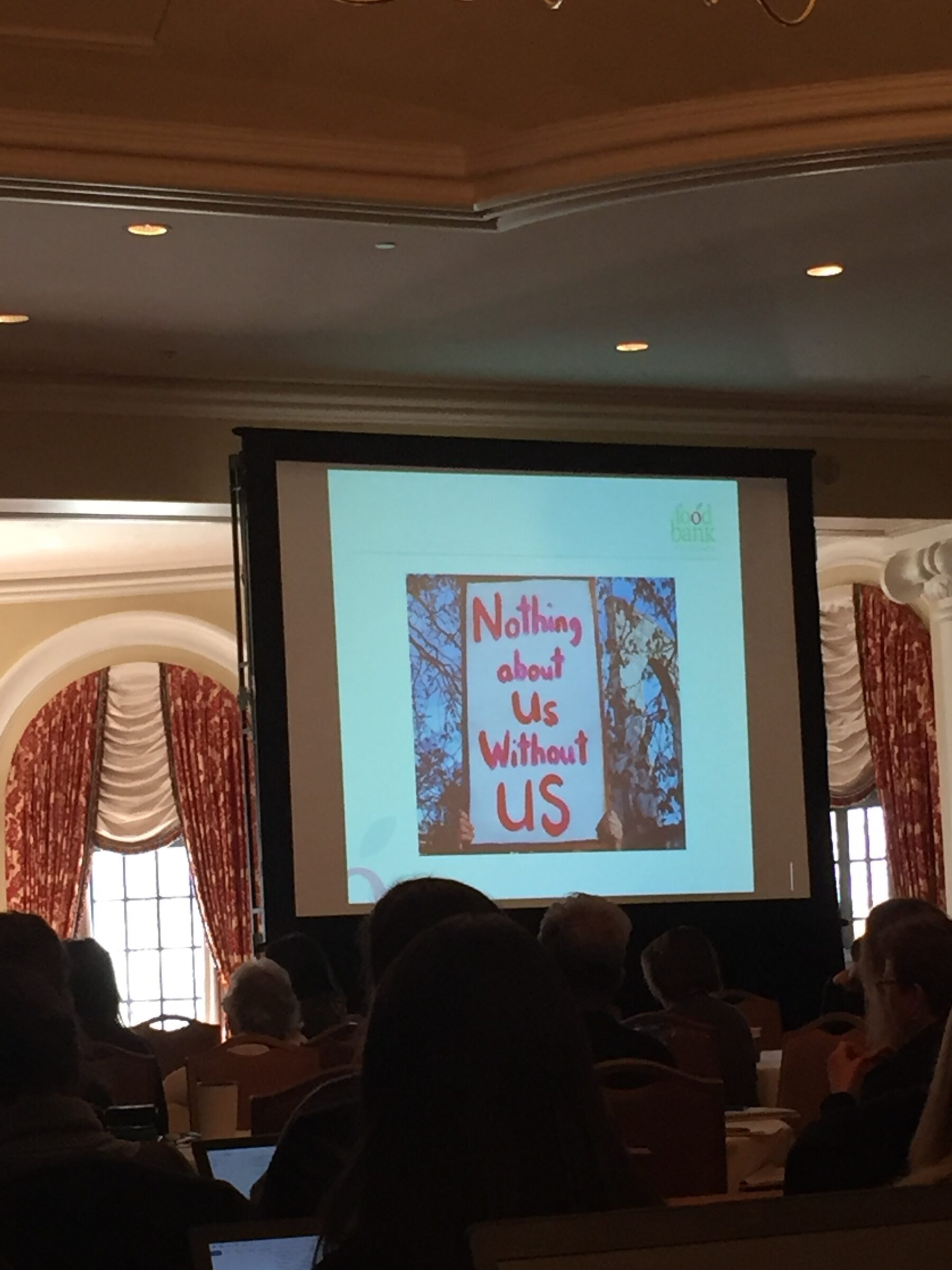What I learned at the Anti-Hunger Policy Conference in Washington, D.C.

The Anti-Hunger Policy Conference, jointly hosted by Feeding America and FRAC (Food Research and Action Center) took place in Washington, D.C. in early March. It was inspiring to be in the room with so many anti-hunger advocates, many of them on the frontlines in D.C., all fired up and ready to fight for the social safety net. Researchers were also eager to share the latest results on the impact of anti-hunger programs on America's poor.
It was a wonderful two days of personal stories of hunger, learning about unique programs improving access to healthy food, and how the current threats to our safety net could have devastating effects on our nation's children.
A few of my biggest takeaways:
- Nothing about us, without us. The voices of the people we serve need to be heard. Or as one woman put it, "don't tell us what we need, ask us what we need."
- Food banks provided 4 billion meals in 2016. SNAP provided 40 BILLION MEALS.
- 43 million Americans rely on SNAP to get by.
- Most children in immigrant households are U.S. citizens, and they are acutely more vulnerable to hunger when their parents are living in fear of being deported. Children who qualify for SNAP have parents who don't want to risk sharing their personal information with the government, for fear of being targeted for deportation.
- 31% of African Americans are served by Feeding America food banks each year.
- 17% of Latinos are served by Feeding America food banks each year.
- 57% of food insecure people live above the official poverty line.
- 26% of food insecure people are ineligible for federal assistance programs because they earn too much to qualify.
- Every county in America experiences food insecurity, from a rate of 4% to 28%.
- 21% of all kids in the U.S. are food insecure.
- 50% of SNAP recipients are still food insecure.
- 25% of households with incomes 130-185% above the poverty line are food insecure.
- 25% of hospitalized kids are food insecure.
- 30% of hospitalized kids are eligible for WIC/SNAP
- Households with a teenager are more likely to experience very low food insecurity.
- In nine states, 25% of kids are food insecure.
- 85% of food insecure households with kids have at least one adult who works.
- 5 million kids have been lifted out of poverty because of SNAP
- Every $1 spent on SNAP = $1.22 in economic activity.
- Kids who use SNAP have an 18% higher high school graduation rate than those who are food insecure but do not access SNAP.
- 33% of households served by food banks have a member with diabetes.
- In Washington, D.C., 1 in 3 households struggle with food insecurity. East of the Anacostia River in D.C., 35.5% of the population is obese, compared to 20% in other parts of the city.
- The connection between hunger and health is inextricable. Programs which improve access to healthy food improve health, decrease healthcare costs, and increase economic activity.
To learn more about hunger in America, visit: www.frac.org, www.feedingamerica.org, and The Hamilton Project for a lot more information.
How can you help? Taking action and supporting your local food bank or SeaShare is a great first step.